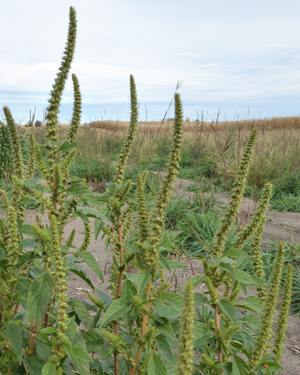“The response is encouraging. People are taking this seriously,” says Peters, a North Dakota State University Extension sugar beet specialist who’s spearheading NDSU efforts to fight the weed in the state.

Palmer, which closely resembles other pigweeds, has been named America’s most troublesome weed by the Weed Science Society of America. It can damage farm equipment and devastate yields, with yield losses of up to 91 percent in corn and 79 percent in soybeans reported.
A huge and longstanding concern in the southeastern United States, Palmer has been spreading into the Upper Midwest. The weed, already present in Minnesota and South Dakota, was identified for the first time this summer in North Dakota in five counties: McIntosh, Benson, Dickey, Foster and Richland counties, too.
No more confirmed cases are expected in the state this year, given the lateness of the crop year, Peters says.
It was just a matter of time that Palmer was found in the state, so North Dakota agriculturalists shouldn’t be dismayed or discouraged that it happened, Peters says.
The focus now needs to be on controlling it. There’s a fundamental difference between finding a few Palmer plants in a handful of fields and having the weed established in many fields across the state, he says.
At its current level, “We don’t have Palmer in this state. We don’t want Palmer in this state,” he says
Palmer combines a number of traits that it makes it especially difficult to control. The long list includes rapid growth, a large number of seeds (as many as 1 million per plant), tiny seeds (making them easier to spread unintentionally) and fast-developing resistance to herbicides.
Peters identifies three things that area agriculturalists can do in coming months to better prepare themselves to control Palmer.
- Study how herbicides affect Palmer and other pigweeds.
- Learn more about how to identify Palmer, a task at which even experts can struggle.
- Learn more the weed’s weaknesses and how to exploit them.
“It’s like a sports team that studies an (upcoming) opponent,” Peters says. Palmer is “a formidable foe. And we need to be studying this formidable foe to exploit its weaknesses. Weeds are exploiting us.”
Peters praised the North Dakota Department of Agriculture for its collaboration in fighting Palmer. Learn more about the weed from the state ag department at https://www.nd.gov/ndda/PA.